




It has been a pleasure and an honor to work with the Quilt Volume 3 team. There is no expression of gratitude great enough for our editorial team, designers, event coordinators, our faculty advisor Dr. Evans, the English Department, all who submitted their work–not just those we accepted–and everyone who has kept interest and readership in Quilt. We are greatly indebted, and this is what we have to offer–
Quilt Volume 3: In Bloom. You will find the heroes of this volume at an altar, under oceans, in the kitchen at noon, and there again at midnight. Between these pages are people looking to prune old selves, only to learn time and again that those aren’t dead branches; they’re roots.
Much love, Fiona Mulrooney, Co-Editor-in-Chief
Sam Goodale, Co-Editor-in-Chief
Urooj Salar, Creative Managing Editor
Annalynn Plopp, Academic Managing Editor
You will find some repeat names on the Table of Contents and the Masthead. Quilt does everything in its power to avoid selection bias, and we believe that our methods are effective. Submitted works are presented anonymously to the Editorial Board Members. Anyone who recognizes a piece’s author must leave the deliberation room.
As both of us sit in on these meetings, we can assure our readers and our contributors that all pieces are discussed with care, and most importantly with respect for the creative process. There were many close calls for this issue–we hope a rejection from Quilt was not cause for discouragement for any one young author. We love you! Please keep writing!
Sincerely,
Fiona Mulrooney, Co-Editor-in-Chief Sam Goodale, Co-Editor-in-Chief By Grace Maidment Illustrated by Anna Sum
By Grace Maidment Illustrated by Anna Sum
let’s say: you are walking you are walking & you see exactly where the sidewalk stops & this is perfect you know exactly where one feeling end s & ano
let’s say: you are about to wake up or you are about to be put under forgive me the lines are blurred sometimes you know there was a ring on your right hand but now it’s on your left & you can’t remember turning thirty-two

let’s say: you you, an ocean you, a boat you, a fishnet you, a comma, you, the ocean & the boat & the fishnet & the comma what comes next?
let’s say: someone’s on their knees someone’s on their knees proposing or pleading or perhaps picking at a raised bit of floorboard this person is you or someone else or you again someone’s on their knees asking for something they don’t want just so everyone will take their hands off of their eyes
never mind: walk into a bar ask for a vodka cran ask for a song take a number take a tongue follow someone out & sleep with them sorry, who was that? sorry, what was that? don’t look at me this is what you wanted
never mind: throw a hand grenade get them in your car & forget to brake speed forward open your mouth & reveal something twisted & ugly keep speaking do i know you?
almost almost this time poor thing
II III
you are running sidewalk sidewalk the end. that’s not your fault is it?
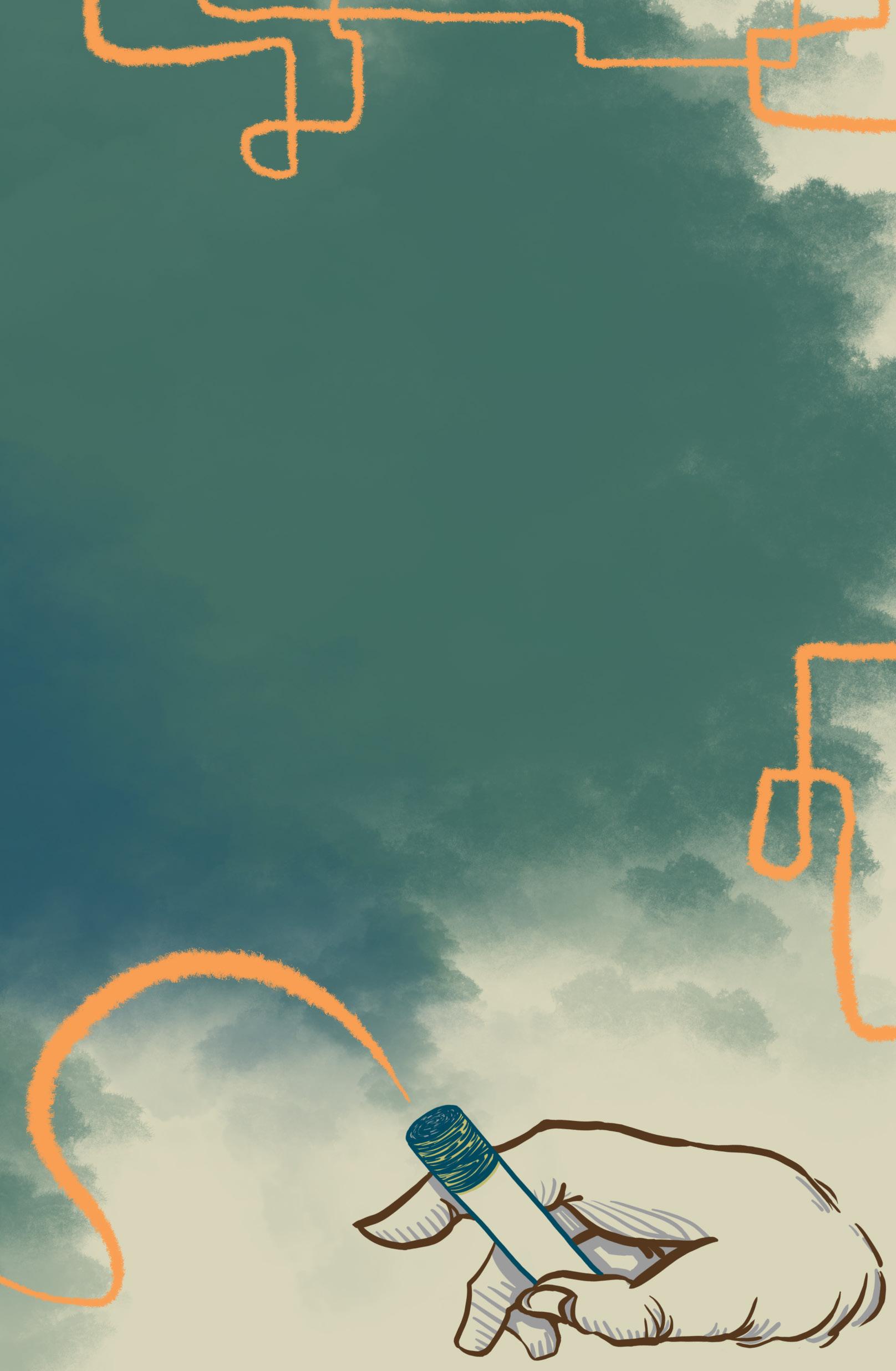

While popular music is dominated by artists embracing party culture and —in the view of neoliberal morality— its subsequent vice of drug use, Kid Cudi’s 2009 hit “Pursuit of Happiness (Nightmare)” examines the subject as a complicated matter. In collaboration with Ratatat and MGMT, the song’s airy piano, hi-hats, and synth beats produce a catchy and diverse sound that, over ten years since its release, remains popular at clubs and parties today. However, analyzing the song’s lyricism and technological production in tandem suggests it does not solely celebrate party culture, but also explores the vast racial, social, and psychological means that drive an individual to these scenes. “Pursuit of Happiness (Nightmare)” challenges colonial values as the song’s meaning, predicated on the tension between its linguistic and instrumental elements, dismantles the
white cultural emphasis on lyrics as music’s main source of symbolism. Cudi disrupts this European priority as his lyricism and composition reflect different values, share a nuanced perspective on partying, and align with the tradition of Black popular culture that shifts from the binary oppositions of European art.
The song’s narrative illustrates and critiques the reliance on drugs and alcohol to obtain happiness, and Cudi’s contradictory message subverts linear, European conceptions of art’s purpose. The opening verse portrays the song’s speaker rolling a joint and driving drunk, which escalates the consequence of substance abuse on an individual to one that endangers others. Alongside the lyrics a delicate piano scale is played, juxtaposing Cudi’s harsh lyricism with a blissful composition. Tricia Rose, in her seminal work Black Noise, examines the musically dense and complex productions of rap:

“rhythm and polyrhythmic layering is to American and African-derived musics what harmony and the harmonic triad is to Western classical music” (Rose 66). The lack of connection between the song’s language and instrumentation signifies a compositional priority that differs from the European emphasis on linear harmony.

“Polyrhythmic layering” is not only in the song symbolically but in its genre-bending composition, with the combination of Cudi’s rapping and psychedelic production by electronic rock groups Ratatat and MGMT. Rose expands her description of American and African musical values by suggesting that “these features are not merely stylistic effects, they are aural manifestations of philosophical approaches to social environments” (Rose 67).
The vast soundscape of “Pursuit of Happiness (Nightmare),” from its drum-rolls to the electric guitar, mimics the many emotions and the overwhelmed nature of a drug-in-
duced high, especially in an environment of drunk driving as Cudi’s first scene depicts.
The song’s non-linguistic qualities illuminate Cudi’s semantic narrative, and while its lyrics and catchy club sound initially glorify reckless behaviour, this message is complicated by Cudi’s exploration into a fragmented, interior self. Contrasting the rash and impulsive scene of the first verse, Cudi’s second verse divulges into the psychological troubles of the narrator: “Tell me what you / know about night / terrors every night” (Cudi 2009). The haunting invocation of night terrors after a chorus exclaiming a “pursuit of happiness” exhibits the song’s antithetical view, indicated by the song’s name.
“(Nightmare)” being in the title’s brackets implies how the consequences of party culture, and utilizing drugs as a means of attaining contentment, is often neglected in dominant pop culture narratives. Cudi’s consideration that night10
mares are often the aftermath of partying can be analyzed with Katherine McKittrick and Alexander G. Weheliye’s sentiment that “the practice of loving, desperately, the unspeakability of music, is found, in part, in our neurobiological and physiological and intellectual response to that music and music makers” (20). As the chorus does not address the “nightmare[s]” in the song’s title, Cudi conveys the “unspeakability” of heartache, mental illness and night terrors in an environment that attempts to numb these difficulties through various substances, while desiring to be loved and heard amidst the noise.
Despite the somber nature of Cudi’s second verse, he does not feed into the spectacle condemning partying at large; instead, the song’s upbeat production aligns with a typical club soundscape. Cudi’s refusal to didactically judge or ridicule partying relates to how “music dancing, music jumping,
music singing [...] is one way black communities physiologically and neurobiologically navigate racist worlds” (McKittrick and Weheliye 21). As “black communities” pioneered hip hop through New York’s club scene in the 1970s, — and as the genre’s birth is credited to Afro-Latino youth emphasizing joy when a highway expansion project displaced them— partying is not merely a means of debauched escapism but a way to “navigate racist worlds” during oppressive capitalist measures. Thus, the upbeat, electronic hip hop of “Pursuit of Happiness (Nightmare)” displays partying as emancipatory in a colonial society that elicits projects detrimental to marginalized communities. Mark Campbell’s scholarship is pertinent in explicating how Cudi amalgamates music and sociopolitical discourse in how he argues “found objects and technologies, which inform and enhance black cultural production and music making, provide us with

Cudi “narrat[es] humanity” by combining technological production and poetic lyricism to express a complicated relationship with party culture.
Cudi’s narrator experiences conflicted feelings toward drug use and negligence, and the song’s instrumentation mirrors this complex attitude through its layered and genre-bending composition.
Tricia Rose’s stance in “My Mic Sound Nice: Art, Community and Consciousness” can help navigate the complex narrative found in the song’s linguistic and musical production: “Hip hop realism is filled with metaphors and metonyms of existence that trouble listeners or commentators from a wide range of political, social and intellectual perspectives” (505). As “Pursuit of Happiness (Nightmare)” does not take an explicit side in either praising or vilifying party culture, Cudi’s liminal position may “trou-
ble listeners” who are accustomed to the European priority given to binary, black-and-white thinking. The song’s complicated lyricism and composition reveal a perspective of hybridity that disputes the European emphasis on singular harmonies, as discussed in Rose’s Black Noise. For example, the eeriness of Cudi’s second verse rapped against an upbeat, ethereal piano challenges the uniformity and harmony of thought in European standards of art. Imani Perry, in her introduction to Prophets of the Hood, reflects on the diversity of expression in hip hop as an inherent “ideological democracy [which] prevents the kind of coherent political framework necessary” (7) for the genre’s morality to be defined by European values. Cudi utilizes an “ideological democracy” in “Pursuit of Happiness (Nightmare)” as his lyrical and instrumental production illustrates different views of party culture.

The simultaneous embrace and criticism of partying in “Pursuit of Happiness (Nightmare)” alludes to the wider space of contradiction that hip hop occupies. Cudi engages with the fast-paced, electronic melodies of a nightclub soundscape whilst airing critique on its escalation of dangerous behaviour and emotional repression, positing a dual narrative that both replicates party culture while holding reservations for it. This juxtaposition is common in hip hop music, as explored by Stuart Hall:
By definition, black pop culture is a contradictory space. It is a sight of strategic contestation. But it can never be simplified or explained in terms of the simple binary oppositions that are still habitually used to map it out: high and low [...] There are always positions to be won in pop culture… (26)
As Hall contends that Black popular culture subverts rigid binaries distinguished by European val-
ues, Cudi continues in this tradition by dismantling conventional oppositions. While not following the messages from “high” culture that deride nightclub scenes and electronic music as lower forms of entertainment, he neither fully celebrates these environments by suggesting the tacit “nightmare” that looms over partying and drug use. Cudi does not essentialize party culture as good or bad and instead examines it as a nuanced atmosphere where people pursue happiness at night and then “lay awake in the bed full of sorrow” (Cudi 2009). Thus, “Pursuit of Happiness (Nightmare)” rejects stringent European notions as Cudi does not represent a specific moral position but embraces the ambiguity that is integral to hip hop and Black popular culture at large.
By equally examining the linguistic and instrumental elements of “Pursuit of Happiness (Nightmare),” the song’s unique and complex view toward party-

ing, drug use, and mental health emerges. While European beliefs on popular music prioritize lyrics as exhibiting a song’s message, analyzing the musical composition of “Pursuit of Happiness (Nightmare)” generates new meanings and angles that must be read in tandem with Cudi’s lyricism. The song’s complicated narrative disrupts colonial traditions by emphasizing nuanced over binary thinking, demonstrating club culture as both liberating and destructive, and forsaking high and low conceptions of art. By employing scholarship in Black and hip hop studies to dissect the song further, audiences can better understand the longevity and playability of Kid Cudi’s 2009 hit, aside from its catchy and memorable chorus.
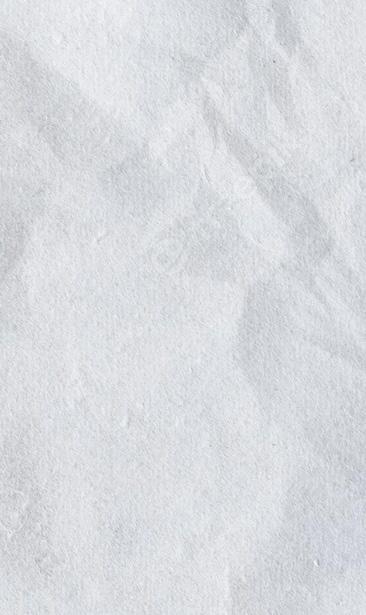
Cudi, Kid. “The Pursuit of Happiness.” Man on the Moon: The End of the Day, GENIUS, https://genius.com/Kid-cudi-pursuit-of-happi ness-nightmare-lyrics.
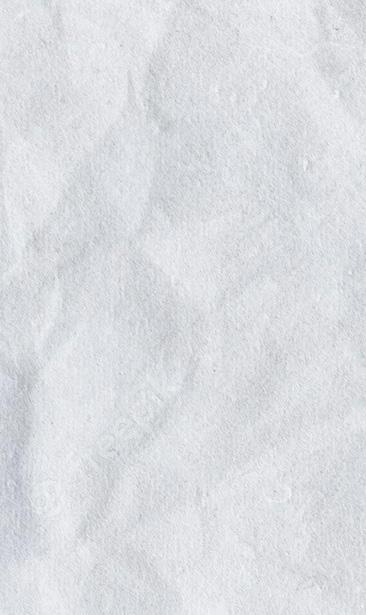
Hall, Stuart. “What Is This ‘Black’ in Black Popular Culture?” Black Pop ular Culture, edited by Gina Dent, The New Press, 2009.
McKittrick, Katherine and Alexander G. Weheliye. “808s & Heart break.” Propter Nos, vol. 2, no. 1, 2017, pp. 13-42.
Perry, Imani. “Introduction.” Prophets of the Hood: Politics and Poetics in Hip Hop, Duke University Press, 2004.
Rose, Tricia. “Soul Sonic Forces: Technology, Orality and Black Cultural Practice in Rap Music.” Black Noise: Rap Music and Black Culture in Contemporary America, Wesleyan University Press, 1994, pp. 62-96.
Rose, Tricia. “My Mic Sound Nice: Art, Community, and Consciousness.” That’s the Joint!: The Hip Hop Reader, edited by Murray For man and Mark Anthony Neal, Routledge, 2011, pp. 504-17.

He never walks by. He could always walk by. I don’t forget that.
Behind the curtains, my mind runs his voice through my brain. This street is empty, and I am pale behind my curtains. He never walks by, but he’ll never see what’s in the house, he never walks by.

This space is mine. It sits in amber hues when the sun casts on the curtains. I sing loud, just for myself. Humming on the floor, on a cork yoga mat, the summer heat pulls something from me. I’m strung about, as if melting. I enjoy it.
I light up a joint around two. It’s a schedule I didn’t mean to create for myself.
I retired the smoke detectors about a month ago. It only felt fair. Why discriminate against one smoke when I structure my day over the worship of another? They were too sensitive, anyhow. I don’t like to surround myself with that energy.
The air smells of dried lavender and warm bananas. I let the fruit sit in a glass bowl on the counter. It is sweet but growing past tolerable. The smells mould together well though. I believe they call it a compliment
There are ants in my apartment now. They are getting to my fruit. They’re carpenters. Big, black, and quick-paced. One bit me a few days ago. It got caught between my chest and the floor. I yelled at them for a while, but they never hear me. They never stop moving.
I breathe in the smoke, but it lingers like steam. I think it moved the curtains, so I let out a scream.
I pop the pills I’ve been told to take. It leads me to my favourite part of the day. When you look at a wall long enough, the paint begins to spin. You know it is not happening, but you still see it twist like heat rising off asphalt. It goes left first, then lags, stops, and starts again the other way. I fold into the centre, and stare up, as the rug sucks my skin in like a fibre. I don’t feel my skin anymore, but I begin to hear him call my name. He speaks like the silent and intense presence of a lighthouse beam. I can almost see it.
There’s an itch on my shoulder but it just went away. I think I’ve felt that before, a while ago. I didn’t move to scratch it. Is that power or have my nerves turned to clay?
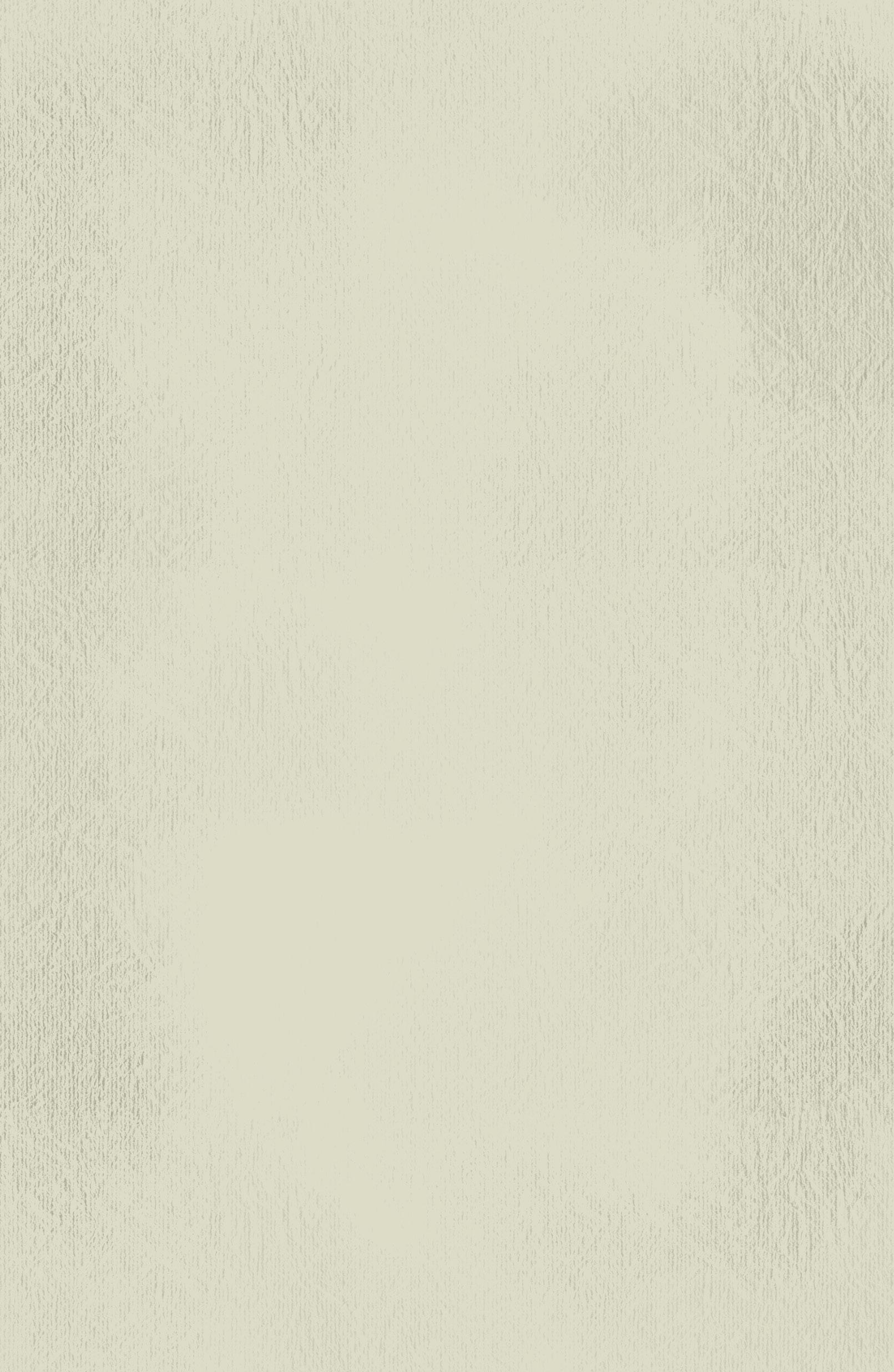
What if nobody hears your voice and only hears your words? What slimy, fluttery voice would he imagine me to speak in? My voice is like Velcro with the richness of molasses. It is a heavy voice, but a playful one. I say the word velvet and it shivers and I laugh. Imagine what unconscious pleasure my voice could bring. I don’t recall if he heard it. Such a shame. I speak beautifully.
A rustle once again, and I twist my head to find the curtains swaying. Like the ants that eat my skin, I yell at them to stop, but they keep moving. I try to focus on the ceiling, but the shadows cross my eyes. A crack of light hits the floor, and I shudder at its sight. I love my smoke, but now it breaks in rays across the room. The curtains move in such a stirring way, you’d think they’re dancing like I once used to do.
But I can’t move; I don’t have skin. The flooring grips, and my body sinks in. Melting like molasses into the cedar flooring, the ants come marching on me. They line themselves against the rays. It’s something new, and I don’t like it.
I try to reach for something to grab, but I end up on my knees. I don’t remember moving, but I can’t remember most things.
Did he say my name, and did I ask for his? Did I get my water? It’s getting dry, and I think I need some of it. I close my eyes and try to see him, and then I start to sing. I try, but stop, because they interrupt. Ridiculous, arrogant, curtains. They have the balls to move even though I put them in.
The sounds smother my breath. The light fractures and it stings. I think it’s starting to burn my stuff. This is why I don’t move things.
It’s their fault I can’t see, and I know they’re doing it on purpose. They want dancing, but I don’t move. I think I’ve found myself in a standstill.
On one side my curtains sway with a fury that’s passive, light, and windy. On the other, I have my army. I brought them fruit; they bring their devotion to me sweetly.
I stare at the curtains, and they stare at me, but I can’t tell how long it’s gone on. The more they move, the more they twist, but that’s their plan. They want me to second-guess. They want me to think I’m wrong.
A black line moves up the wall, and I know what it is but I can’t say it. It traces over four layers of paint. I stay.
Everything that was mine moves on, disappearing through a window once hidden.

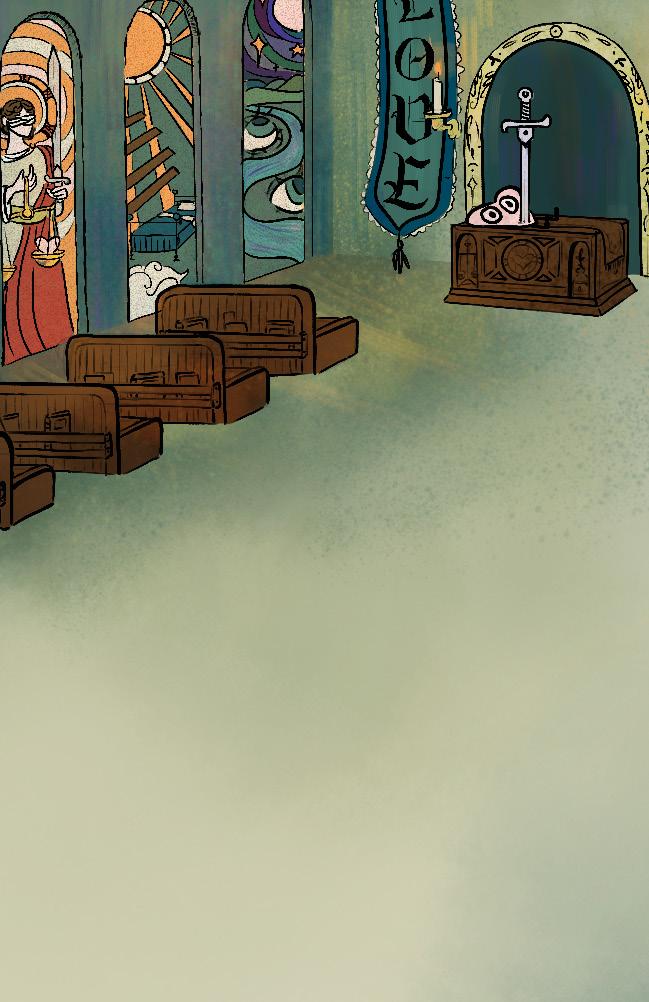
I have recorded a love blind as faith opaque and unwavering.
Love – she simmers out of sight while devotees come to her doors.
They’ll call her forth: knees purple, heads drawn to the floor reverently.
Rooted in rows as the play of sacrifice drones on at the altar, an evisceration of self.
The blood splatters, dripping, staining the church rust-brown, and it will flow past the knees of the congregants, eyes sealed shut. They pray fervently to be next, to be blessed, ended by the rotten-toothed priest who sings her name coated with sugar, amber and molasses-thick, lavishing her.
I have witnessed a love quiet as secrets, closeted when the slats barring the window let in refracted golden light. Let out during the witching hours when the stars sparkle and insist on being seen, this love’s gentle caress sweeps through your hair, coarse and matted, to pull away with fingers laced with root-tipped strands. She lies in bed smothering you, reverberating hushed whispers, burdening you with her weight as she settles to wrap you in her lips. She’ll melt back into the shadows come dusk when the rosy tint of the nosy sun invades your bed, awakening you with its prodding fingers. But she’s not something you can forget. And come moonrise, she’ll slowly asphyxiate you again and you’ll wake up confined. You’ll die with her on your chest and you’ll pay her no mind.
I have been a love helpless as an infant belly up, clawing at the sky with a skewed sense of clarity. Feed me, spoon too wide, stretching open smile muscles to practice their flexing. My heart is man-made, an irregular rhythm. The slightest falter cuts off the blood supply and I turn blue and blind, blathering. Spit bubbles at the corner of my crusted mouth, so press your fingers into me, chest deep. Feeling the cloying condensation, wipe my brow and kiss the valley of my orbital bone. Now dead, send me adrift and in the haze I will find a compulsion to beat, add a chime and a mark so that I hiccup a breath through the night, a restart.

Illustrated by Audra Crago
There by the wind-wake and diesel fumes, peeling off the road I can chase a younger version of me to the playground
It’s dark; I can barely see the swings, but once I’m there I’m a ghost a dark sweatshirt on a pendulum, a metronome of flesh and bone swinging through empty space back and forth trading breaths with winter

I wake up small again on the swingset almost sure I can feel short bangs brushing my forehead, braids my mother wove for picture day clinging staticked to the itchy sweater vest all curled around the edges of a gap-toothed grin (my teeth aren’t straightened yet)
The veined arms of a blackened tree stretch out to embrace a cold sky, the moon is just a streetlamp, and my shoes block the waxy glow on the upswing, holes worn through blue inner soles years had rubbed the treads smooth on carpeted hallways studded with spilled aquarium pebbles and road salt and crumbled granola (I’ve worn them since I was thirteen) but it’s been too long since I was a child—
when I let go at the apex to fly again, I misjudge the landing, stumble on grown-up legs and when my ankle twists, first I think:
the medical tape I bought two months ago how to get to class will I need to go to the doctor
Then, I think: the gap-toothed girl would’ve just cried.
All for nothing, anyway. I walk it off, tuck loose hair behind new piercings she would’ve never imagined and leave the ghost of myself on the still-rocking swing; She can find her own way home.

My nonna was the last to eat in her family, scooping bowls of pastina soup for her husband and children, hovering over the table in case there were pleads for more parmesan or pepper, serving seconds before she got her first; a comforting lunch turned lukewarm by the time she sits in the kitchen alone.

while spooning mouthfuls down her throat sunlight pours on to the table, illuminating details of the soup: rice-shaped pasta, peas, cheese, and carrots, immersed in a chicken broth birthed from the bones of last night’s dinner— she imagines the bowl is as hot as when the soup was first served, mentally trying to replicate the flavour and heat that her husband and children experienced.

sunlight pours on to the table, and she is reminded, despite the cold broth, that it is a blistering July— her children run through a sprinkler while her husband watches them from a lawn chair, and she watches him, smoking a cigarette in the garden.

my nonna gathers all the dishes, empty except for the peas and carrots left by her son —who is more keen on the cheese— and places them in the sink.
before running the tap, she looks out the window, her husband now spraying the children with a hose, their laughter roaring into the kitchen with smiles as wide as their faces.
her daughter wears a white linen dress that my nonna sewed in the spring, wet and clinging to her body while she runs through the sprinkler yet again.
her daughter’s hair, blonde and damp, reminds my nonna of her husband years ago, laying on a towel in Italy days before they left for Canada, enjoying the last of Lake Como before Lake Ontario; enjoying the last of their youth before the youth of their children.
her daughter’s hair, long and thick compared to summers before, dries underneath her husband’s towel, and my nonna expects there aren’t many summers left that her daughter will remind her of her husband but will soon become like her: trading water and sunshine for water and soap.

Tonight, a buzzing, tingling, familiar fear takes root in my abdomen and shivers up my spine.
The moon outside is creamy and dapples the insides of my eyelids with twinkling white lights.

She is woeful: that single, bright eye, harbour of the listless and witness of secrets, But she is not enough to comfort my stomach’s insistence.
The stars wink at me through my window: “don’t, please don’t.”






But they cannot stop the gentle thudding of my feet on carpeted floor, Stop my wrist from turning the door handle, My fingers from finding the light switch in the kitchen.
“It’s just a midnight snack,” I tell the stars.
“It’s just a little nighttime snack,” I plead with the moon. But the demon in my stomach knows better, and his laugh fills my belly with emptiness.
First: bread with butter and honey, my grandmother’s choice it tastes like July afternoon in a faraway kitchen I have not seen in four years.
Second: fragrant pieces of cheddar, rolled up in thick slices of deli meat they taste like an empty fridge when my mother wasn’t home.
Third: tomatoes in vinegar and spices, with crackers to cut the saltiness they taste like Lent, and my father’s angry voice.
I am full of food that tastes like emptiness, full of food that tastes like loneliness.
But the demon is not finished with me, and I am not done, I cannot be done Until pain replaces emptiness with the burning of stomach walls distended. The moon rolls like an eye in a socket and the stars blink furiously: “stop, please stop”
“It’s just a midnight snack.”
Fourth: white lard from a jar on bread, with pink pickled cabbage it tastes like leering smiles from the Romanian vendors at the market.
Fifth: chocolate spread, swallowed by heaping spoonful it tastes like the thinly veiled disgust of my eighth-grade teacher.
Sixth: two apples, cut up and dipped in oily peanut butter they taste like healthy lunches in the backpacks of skinny classmates.
Now it hurts, how it hurts! Stabbing needles of pain as I crawl back to my









In “Diving into the Wreck” by Adrienne Rich and “Pearl Diver” by Mitski, the speaker narrates a deep-sea dive during which the diver undergoes a shift in identity as a result of a quest.
The speaker in each text describes the dive, drawing lines of division between the surface and the sea. The speaker’s imagery reinforces this division, thus rendering diving a symbolic act which initiates and continues this separation. The division then allows for a separation to occur between the diver and who they were on the surface, stripping them of their former identity. Finally, each text uses imagery and powerful language to contribute to the atmosphere and discord within the text. Ultimately, both pieces use symbolism through the act of diving to
create division within the text to examine instability and loss of identity.
Both texts use the act of deepsea diving to establish a barrier between the surface world and the ocean, creating a clear separation between before and after the dive. In Rich’s poem, the speaker says, “the sea is another story / the sea is not a question of power / I have to learn alone” (Rich lines 39-41). The use of the word “another” – as well as the implication that the surface, unlike the sea, is a question of power – establishes a division between the surface and the dive. The speaker establishes this distinction to overlap with a departure not only from the surface but also from others, as the diver must “learn alone” how to navigate in this new environment.


Additionally, the speaker creates a sense of unease by leaving the audience with an unanswered question: if the sea is not a question of power, what is it a question of? In “Pearl Diver,” the speaker opens by addressing the diver directly, saying, “treasure hunter, you are dead” (Mitski 0:30-0:32).
Similar to the solitude referenced in Rich’s poem, death isolates the diver in “Pearl Diver”. In Rich’s poem, the dive separates the speaker from other people; in Mitski’s song, the diver is separated from life itself. The sense of unease created in Rich’s poem is created in “Pearl Diver” as well. Though the speaker declares the addressee to be dead, they also encourage the diver to continue their quest, accompanied by “creatures of your woken mind” (0:42-0:44). The diver’s “woken mind” contrasts with the aforementioned death of the diver, creating tension in the song. The ominous “creatures” add to this tension, as they are neither explained nor addressed again in the song. Thus, the distinction created between the surface and the ocean and the unease created through ambiguity create discomfort and a

In each text, imagery reinforces the division between the surface and the ocean, which further develops diving as a symbolic act that initiates this division. In “Diving into the Wreck,” the speaker describes in detail each part of the dive: “I go down. / Rung after rung” (Rich 2223). The speaker uses realistic and straightforward descriptions throughout the poem to allow the audience to clearly visualize each part of the dive, venturing further from the surface and deeper into the ocean. In “Pearl Diver,” the image of the descent is instead created musically. In the chorus, as the speaker repeats, “pearl diver, dive, dive, deeper / pearl diver, dive, dive, down” (Mitski 0:54-0:59), the melody falls in pitch in quick runs. While there are higher notes, they are repeatedly followed by a series of rapid drops in pitch. In this song, Mitski uses word-painting, a technique used in composition wherein musical gestures reflect the meaning of the text that accompanies them to express an important image within a text (Carter para. 1). The use of word-painting in
the chorus of “Pearl Diver” creates kinetic imagery and a sense of falling, travelling deeper into the sea with the diver. Furthermore, the repetition of these lines in the chorus cements this feeling of continuous and constant descent. “Diving into the Wreck” also uses repetition to reinforce the image and depth of the dive. The line “Rung after rung” places stress on both instances of the word “rung,” using rhythm along with the repetition of the word to create a sense of continuous motion, implying that the movement down the ladder extends beyond the one line. These vivid images of descent use diving as a mechanism to facilitate the process of separating the diver from the surface.
As a result of the separation between the surface world and the ocean, each texts’ divers’ identities disassociated the identity they held on the surface. Both texts concern a quest in search of something under the sea, and, as the quest continues, the identity of each diver becomes inextricable from the subject of their quest. In “Pearl Diver,” the speaker says, “hunter, you were human” (Mit-
ski 1:30-1:33). The use of past tense implies that the hunter is no longer human, and the use of alliteration draws focus to the words “hunter” and “human.” Additionally, in the song, the piano chords slow during the verses, sounding only on certain words. In this line, “hunter” and “human” are individually underscored by these chords, further emphasizing them. By bringing these words to the forefront with the use of alliteration and instrumentation, “hunter” and “human” are juxtaposed, creating an antithesis between the words. In taking on the identity of a hunter, the pearl diver loses their humanity. Furthermore, in the verses of “Pearl Diver,” the subject of the poem is addressed not as a pearl diver but instead initially as “treasure hunter” (0:30) and later only as “hunter” (1:18). Though the title of the song is “Pearl Diver,” in the verses, which carry the narrative of the song, the speaker reduces the pearl diver solely to their quest for treasure. By switching from “diver” to “hunter,” a word that has a much more active and aggressive connotation, the speaker creates a sense of

intensity to the goal of the pearl diver. In another shift of identity, the speaker in Rich’s poem takes on the identity of the wreck: “I am she: I am he whose drowned face sleeps with open eyes” (Rich 77-78). Rather than a loss of identity, the speaker of this poem undergoes a blending of identity with the wreck. By using both the pronouns “he” and “she,” the speaker demonstrates to the audience the changing and dynamic nature of the identity they take on. In referring to themself as the one “whose drowned face sleeps with open eyes,” the speaker takes on the identity of the sunken ship, using the same phrase previously used to describe the wreck. In addition, contradiction is created through the act of sleeping “with open eyes,” adding to the tension of the piece. Each text creates dissonance and disconnection through the dive and through the search as the subject’s identity blends with their goal. By crossing the boundaries of strict and certain identity, both “Diving into the Wreck” and “Pearl Diver” effectively create additional instability.
“Diving into the Wreck” and
“Pearl Diver” also employ imagery to create a dissonant and unsettling atmosphere to contribute a overall sense of discord in the text. In “Diving into the Wreck,” the speaker likens the descent to losing consciousness: “First the air is blue and then / it is bluer and then green and then / black I am blacking out” (34-36). Using visual imagery, the speaker allows the reader to imagine the experience of a deepsea dive. The use of polysyndeton –intentional repetition of conjunctions – to link together the series of colours increases the pace of these lines, implying a sense of panic. Similarly, in “Pearl Diver,” the speaker tells the diver that “the light of the world is fading” (Mitski 0:32-0:34). The speaker in “Pearl Diver,” too, creates a visual image of losing consciousness as the visible light from the surface fades. By referring to the light coming from the surface as “the light of the world,” the speaker separates the dive not only from the surface but also from the world as a whole. This separation leaves the reader and the song’s addressee to wonder what awaits the pearl diver once the light has faded. In

the song, this image of fading light is accompanied by the music itself fading suddenly after gradually building up, using word-painting once again to develop imagery and create a foreboding tone through the sudden moment of quiet (2:35-2:39). In both texts, the descent is framed not as inviting but instead as dangerous and frightening. The imagery and syntax of each of these lines contribute an ominous tone that facilitates the apprehension of the divers in the audience as well. This apprehension and discomfort create a sense of instability that mirrors the instability of identity within the texts.
Adrienne Rich’s “Diving into the Wreck” and Mitski’s “Pearl Diver” both use a symbolic image of diving to create unease and portray shifting and unstable identity. Deep-sea diving is used to create a barrier between above and below the surface, a barrier that is further emphasized through imagery as diving
is rendered a symbolic act. In both texts, this separation results in a fracturing of identity, underlined by a dissonant and foreboding atmosphere. Despite taking on different mediums, points of view, and styles, these two texts effectively use symbolism and tone to examine identity and change through the lens of an undersea dive.
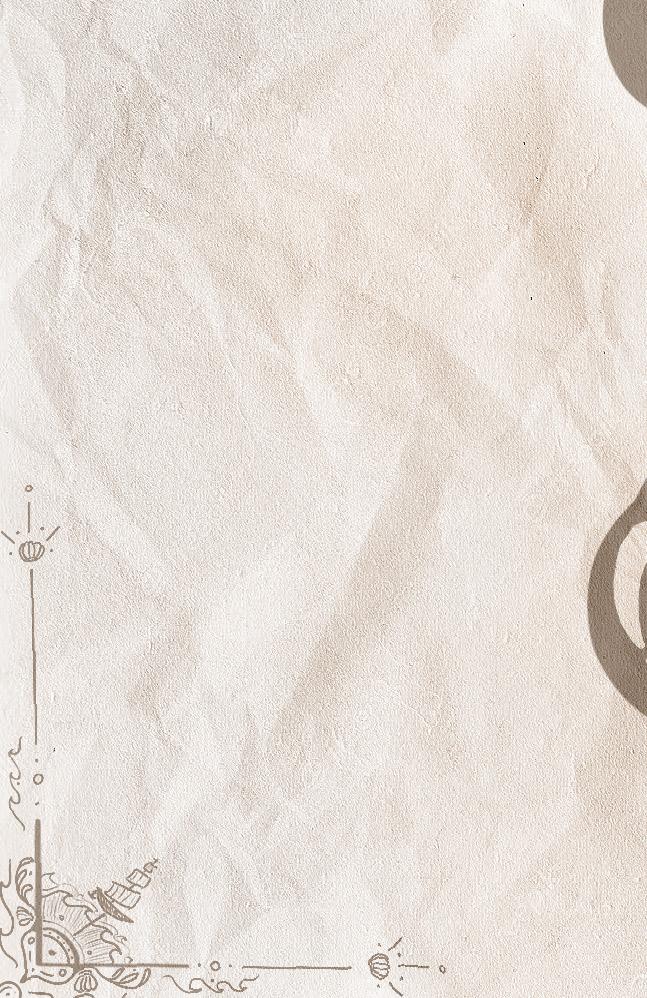
Works Cited
Carter, Tim. “Word-painting (Ger. Wortmalerei)”. Grove Music Online, 2001, https://doi.org/10.1093/gmo/9781561592630.article.30568. Ac cessed 28 March 2022.
Mitski. “Pearl Diver.” Lush. Mitski, 2012. Spotify, https://open.spotify.com/ track/1AawyOAUCnID3AiuXsL5oB?si=d320d46225484fa7.
Rich, Adrienne. “Diving into the Wreck.” The Broadview Introduction to Liter ature: Concise Edition. 2nd ed., edited by Lisa Chalykoff, Neta Gordon, and Paul Lumsden, Broadview Press, 2019, pp. 645-648.


“Do you remember us as children?”
I don’t either, not entirely.
I stood on tables, singing, screaming poetry, so you must have been the quiet one.
Now, turmeric stains my sleeves, and they braid dandelions around my fingers. Now, you’ve been experimenting with facial hair, and I’m too cautious to comment on it. Now, you are the old folk song, the lullaby, and I am the silence between tracks.

Soon, we’ll watch sitcoms in English together, and you will yearn for the sun.
“Kingston is warm,” I’ll say, but I’ve known worse winters, snow like salt. You’ll say, “The sun thawed our bones in the mountains,” then we’ll rest by the fire, backs to the cold.
The lands on which we found joy and creative energy are not ours. Let us acknowledge that Quilt lives on Anishinaabe and Haudenosaunee territory–we live in debt and in gratitude.

“I love them for finding what I can’t find, and for loving me for the line I wrote, and for forgetting it so that a thousand times, till death finds them, they may discover it again, in other lines in other happenings.”
From “The Secret” by Denise Levertov
Co-Editors In Chief
Sam Goodale, Fiona Mulrooney
Copy Editing
Samantha Vacca, Head
Katerina Bovos, Caroline Gao, Natalie Stevenson, Katherine Weidemann
Editorial Board
Urooj Salar, Creative Manager
Sapphyre Smith, Ben Wrixon, Claire Matthews, Michelle
Zeng, Audra Crago, Madeleine Vigneron, Victoria Zeppieri, Daniel Green
Annalynn Plopp, Academic Manager
Caroline Abouchar, Erin Gilbert, Catherine Marcotte, Suzy Leinster, Sofia Mancini, Eleanor Daley, Makaila
Atsolongo, Mariel Matsuda, Sam Russell
Design
Abby White, Head
Audra Crago, Karen Au, Jade DeLuca-Ahooja, Lauren
Bale, Foster McAffee, Montana Barry, Ella Bigras, Anna
Sum, Catherine Marcotte

Cristina Soares, Head
Rose Wagner, Alana Lambert-Dias
